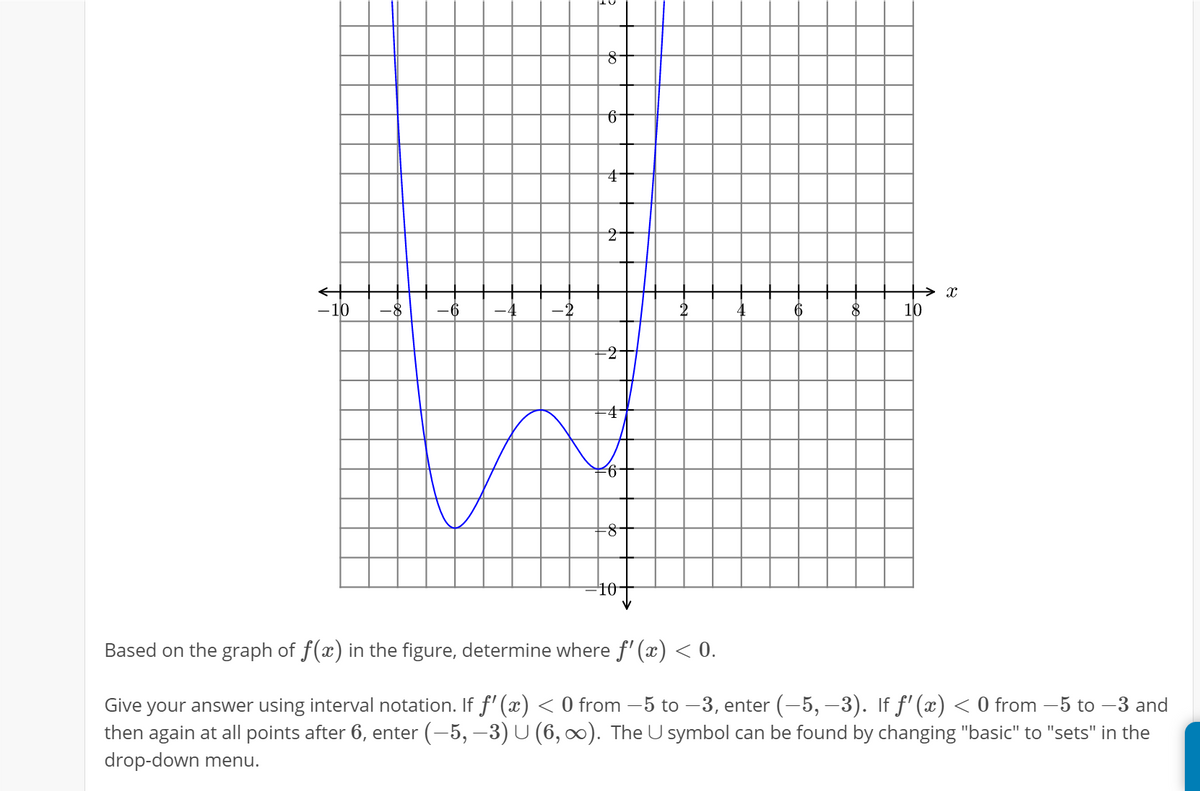6- -10 10 -8- 10- Based on the graph of f(x) in the figure, determine where f' (x) < 0. Give your answer using interval notation. If f' (x) < 0 from –5 to –3, enter (-5, –3). If f'(x) < 0 from -5 to –3 a then again at all points after 6, enter (-5, –3) U (6, 0). The U symbol can be found by changing "basic" to "sets" in the drop-down menu.
6- -10 10 -8- 10- Based on the graph of f(x) in the figure, determine where f' (x) < 0. Give your answer using interval notation. If f' (x) < 0 from –5 to –3, enter (-5, –3). If f'(x) < 0 from -5 to –3 a then again at all points after 6, enter (-5, –3) U (6, 0). The U symbol can be found by changing "basic" to "sets" in the drop-down menu.
Algebra & Trigonometry with Analytic Geometry
13th Edition
ISBN:9781133382119
Author:Swokowski
Publisher:Swokowski
Chapter5: Inverse, Exponential, And Logarithmic Functions
Section5.6: Exponential And Logarithmic Equations
Problem 64E
Related questions
Question

Transcribed Image Text:-10
-8
-6
-4
2
6
10
-2
-4
10-
Based on the graph of f(x) in the figure, determine where f' (x) < 0.
Give your answer using interval notation. If f' (x) < 0 from –5 to –3, enter (-5, –3). If f' (x) < 0 from –5 to –3 and
then again at all points after 6, enter (-5, –3) U (6, 0). The U symbol can be found by changing "basic" to "sets" in the
drop-down menu.
Expert Solution
This question has been solved!
Explore an expertly crafted, step-by-step solution for a thorough understanding of key concepts.
This is a popular solution!
Trending now
This is a popular solution!
Step by step
Solved in 2 steps with 2 images

Knowledge Booster
Learn more about
Need a deep-dive on the concept behind this application? Look no further. Learn more about this topic, advanced-math and related others by exploring similar questions and additional content below.Recommended textbooks for you

Algebra & Trigonometry with Analytic Geometry
Algebra
ISBN:
9781133382119
Author:
Swokowski
Publisher:
Cengage

Algebra & Trigonometry with Analytic Geometry
Algebra
ISBN:
9781133382119
Author:
Swokowski
Publisher:
Cengage